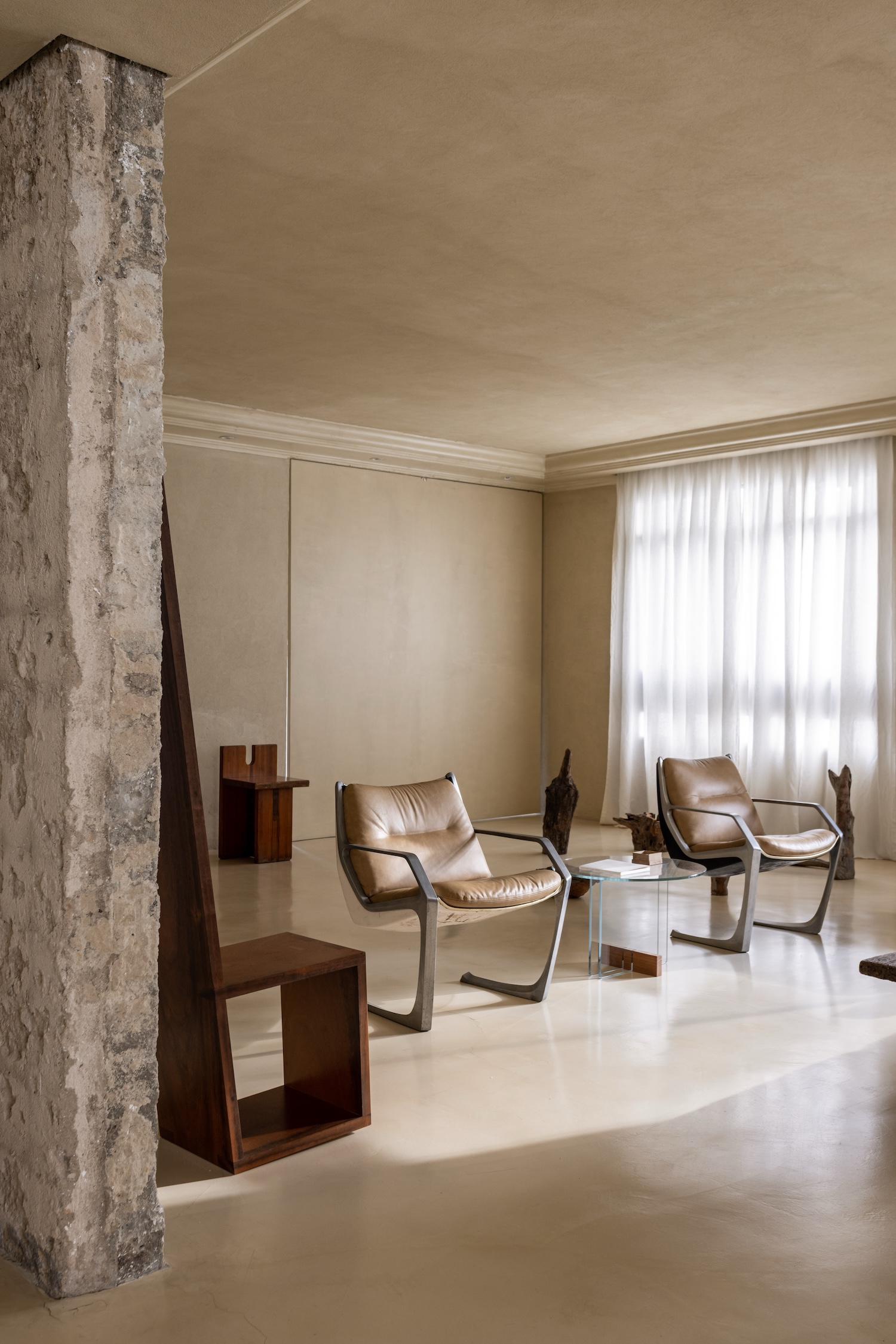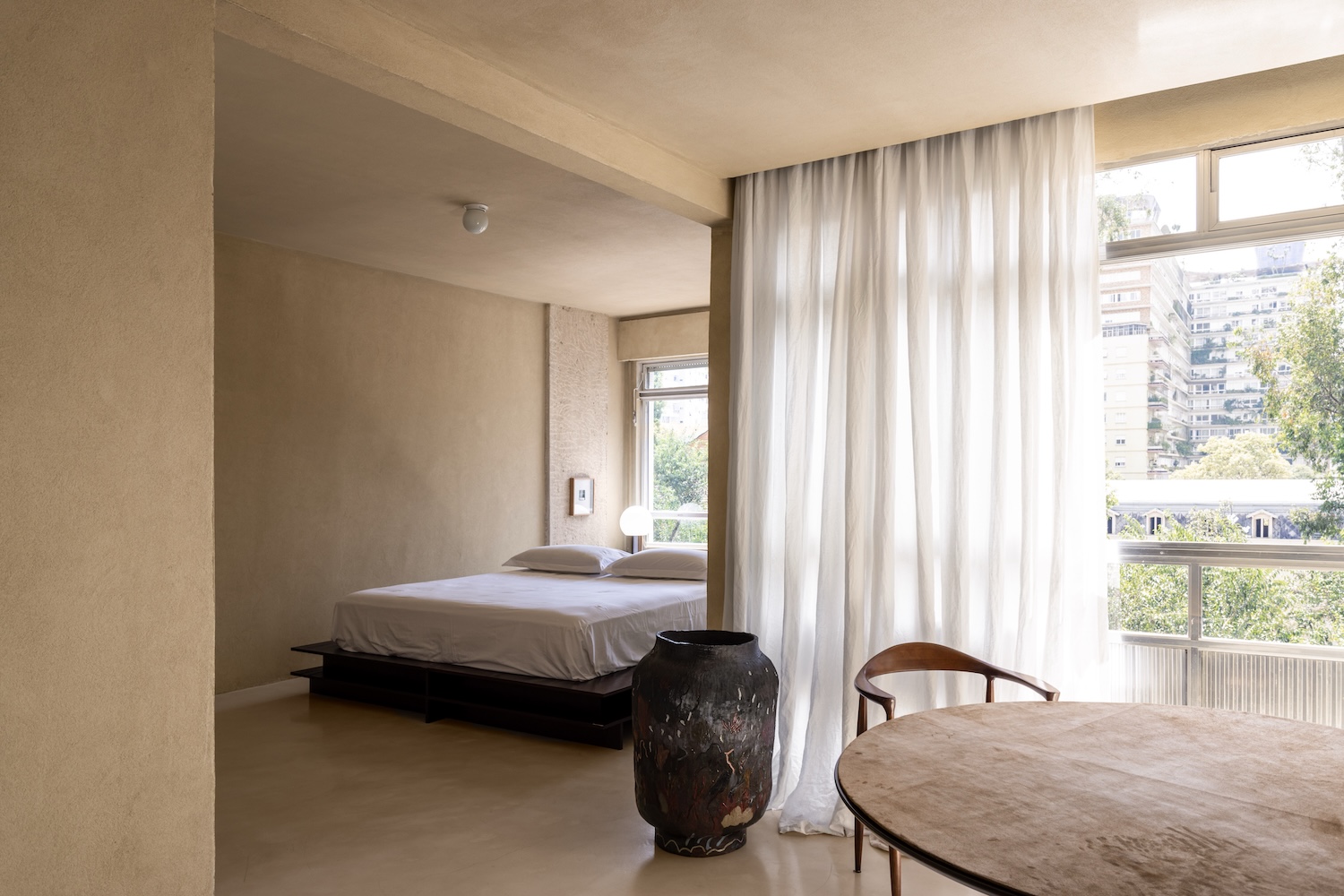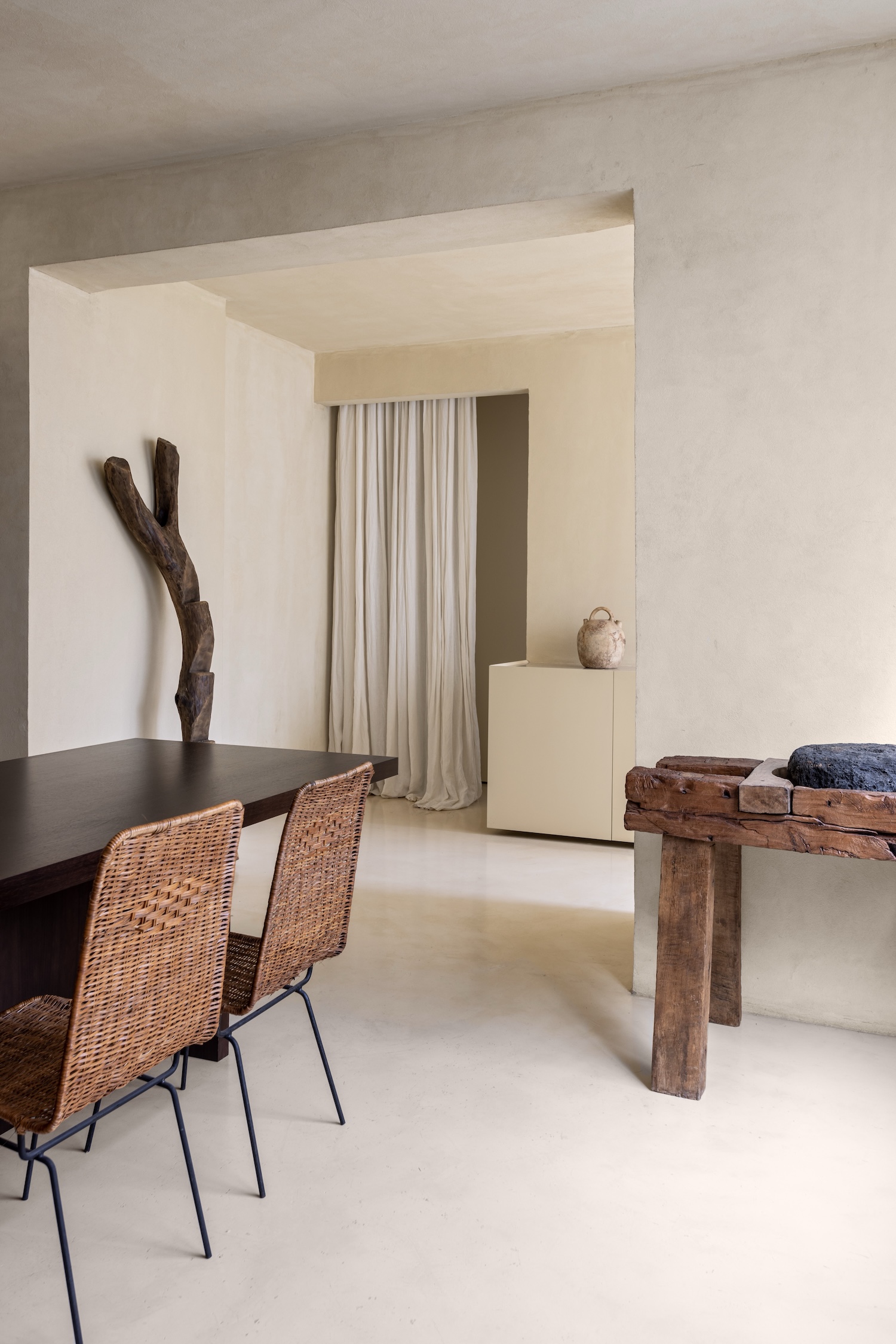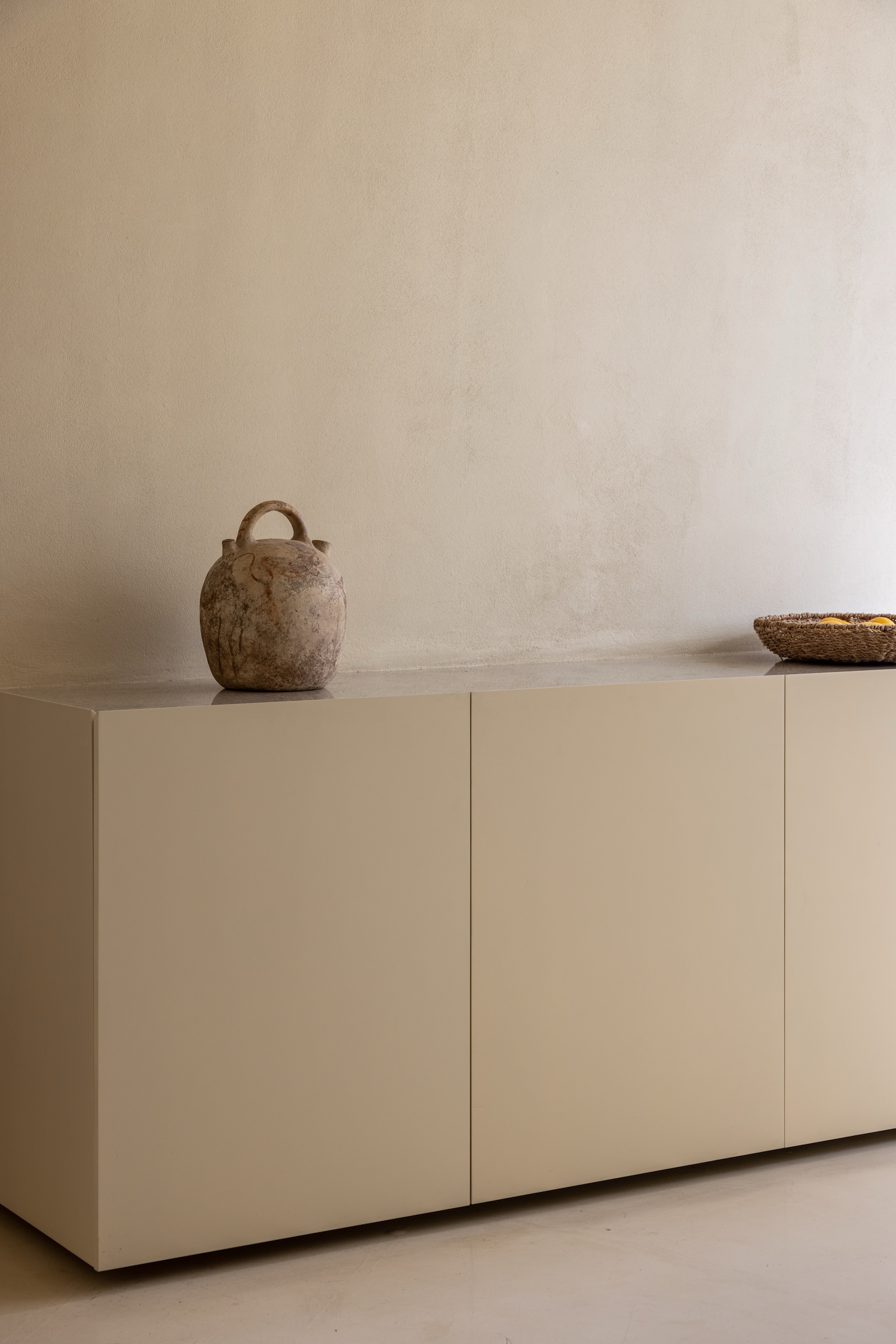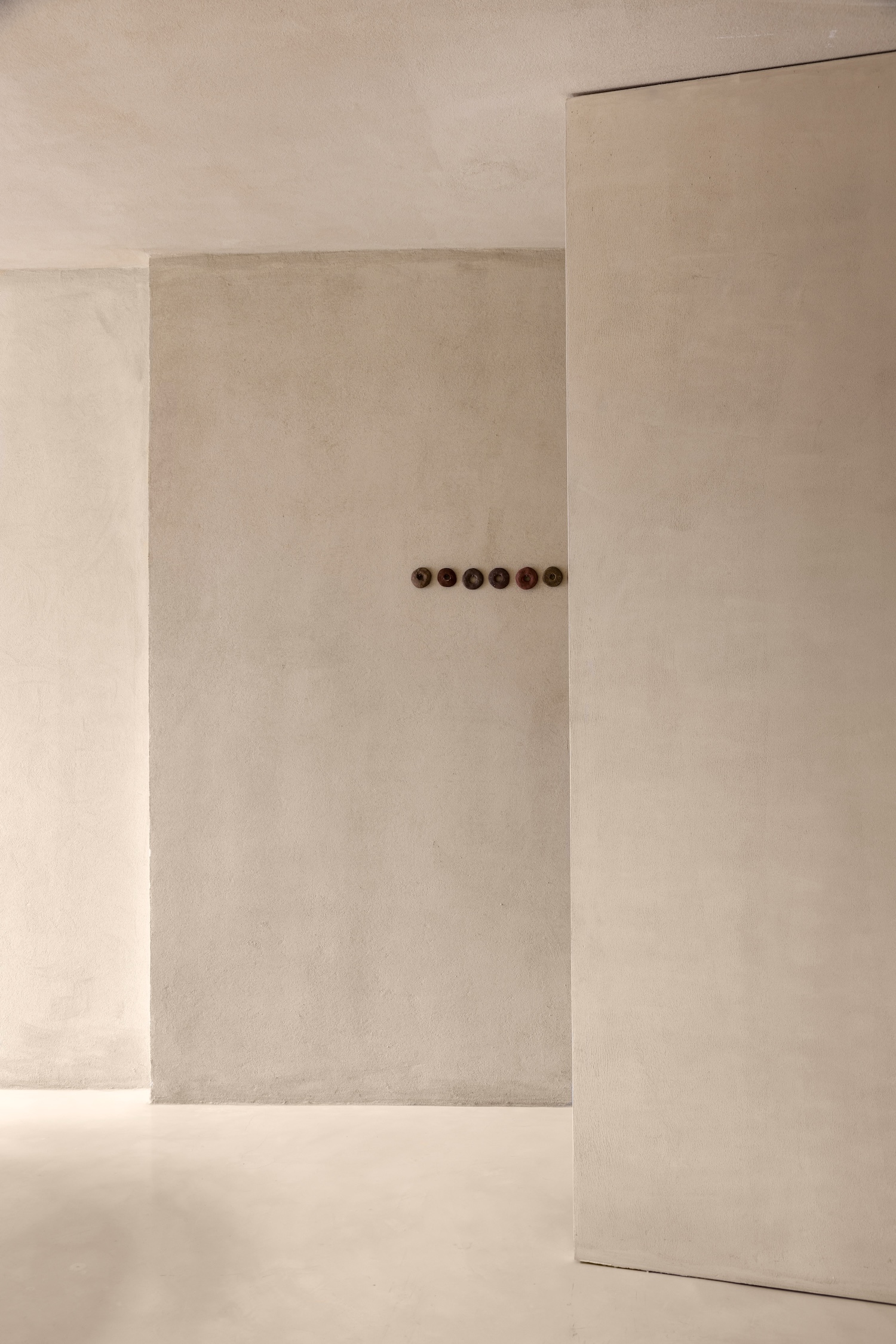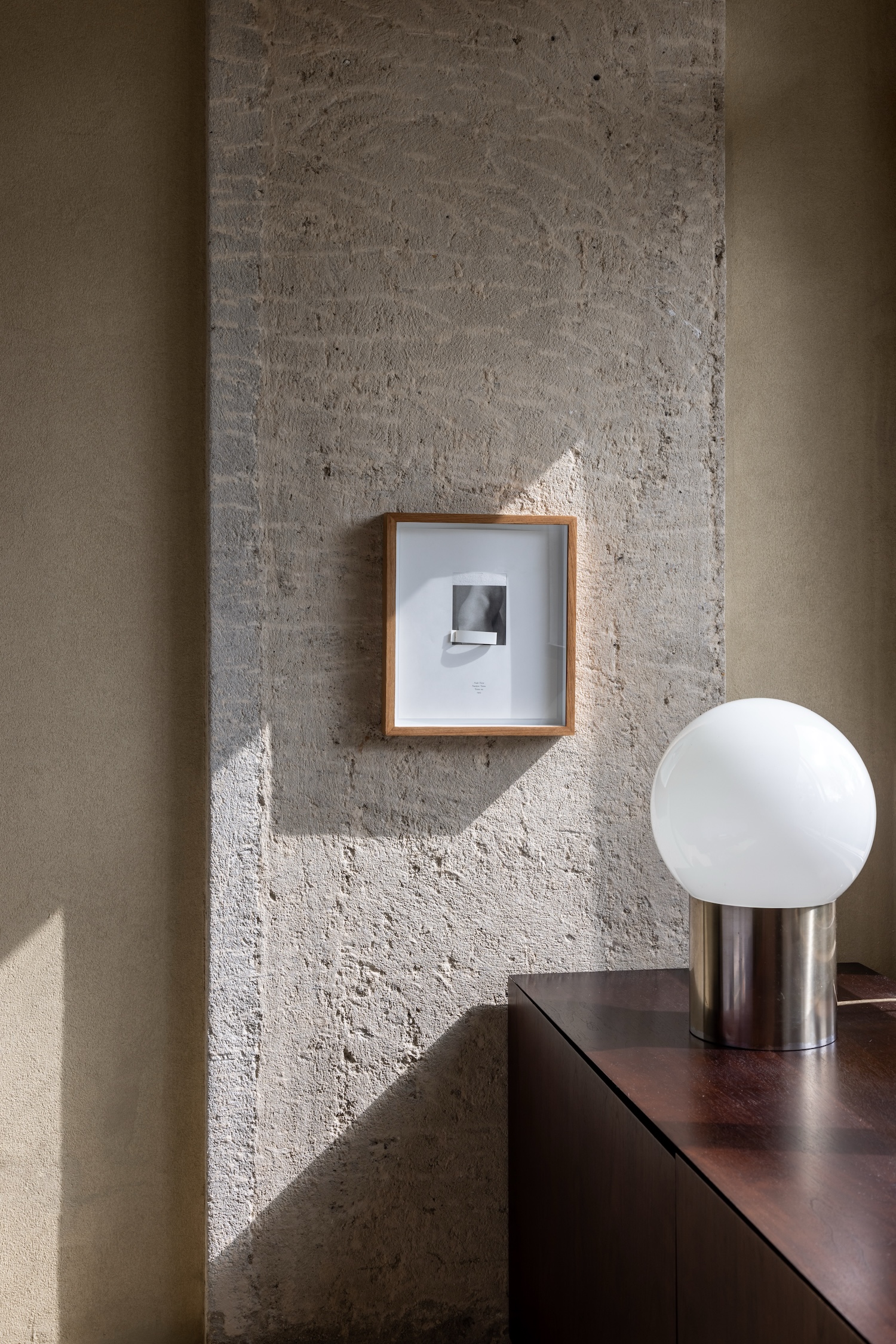Maranhão Apartment is a minimal apartment located in São Paulo, Brazil, designed by MNMA. This São Paulo residence reimagines the domestic interior not as a series of rooms, but as a topography – an open landscape shaped by light, texture, and the fluid movement of bodies. There are no hard thresholds here. Instead, transitions unfold gently, as if the apartment were less built than grown. Sand-textured walls provide a porous skin to the space, their finish achieved through mineral pigments mixed with aggregates – a technique that harkens back to ancient plasterwork, yet here feels unmistakably current. The result is a surface that reads almost as fabric: matte, irregular, and deeply alive.
Beneath it all, the pigmented concrete floor anchors the design. Rather than offering a blank slate, the floor presents tonal shifts that reveal the hand of the artisan – not polished into sterility, but left slightly raw, slightly unpredictable. The designers describe this as an architectural humility, a refusal to let materials disappear into the background. “We wanted every surface to speak,” they note, “not shout, but whisper.”
This whispering materiality sets the stage for a quiet but potent drama of cultural dialogue. Objects gathered from across Latin America and Africa are placed not in isolation, but in conversation with canonical modernist pieces. An angular Brazilian dining table shares space with handwoven Andean rugs. A low lounge chair in burnt teak curves beside a carved Ethiopian stool. These combinations are not about contrast, but about continuity. The design resists the temptation to frame non-Western artifacts as exotic. Instead, it recognizes them as active participants in the evolution of global modernism – a movement that, despite its Eurocentric history, has always drawn from wider sources.



